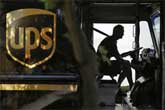| |
|
| |
|
 |
Supply
Chain by the Numbers |
| |
|
| |
- June 28, 2018 -
|
| |
|
| |
|
| |
|
| |
Harley Says Tariffs Forcing Production Move Offshore; Amazon with New Strategy to Succeed in China; Cost to Goverments for New Foxconn Factory in Wisconsin Keep Rising; UPS, Union both Get Something Out of New Deal |
| |
|
| |
| |
| |
| |
$2200 |
|
That is how much retaliatory tariffs against some US goods will add to the cost of Harley-Davidson motorcycles going into Europe, the company said this week. With Europe representing one of the company's strongest markets – up 7% in Q1, versus a decline in US sales – the company announced it would move production of bikes going into the Euro market from the US to plants in Asia or Brazil, which won't be subject to tariffs on US-made hogs. After criticism for the news from President Trump, union officials and others, Harley responded by saying all bikes for the US market are still made in the US. It turns out Harley has been manufacturing motorcycles overseas for years, with factories in India and Brazil assembling hogs with US.-made parts. Harley CEO Matt Levatich has said an assembly plant due to open in Thailand this year was necessary to avoid paying steep tariffs in that market. Harley's move to build the plant in Thailand followed "extremely difficult" discussions inside the company's Milwaukee headquarters, the Wall Street Journal reports, as it is likely now that plant will lead in production of motorcycles for export to Europe.
|
|
|
| |
| |
|
|
|
That is the new estimate for the costs of government subsidies to Taiwanese manufacturing giant Foxconn, mostly known for its assembly work in China for Apple products – up from about $3 billion when it was announced that Wisconsin would get Foxconn's planned massive new factory to build liquid-crystal display panels. In the works is a giant 20 million square foot set of factories in southeast Wisconsin that will cost some $10 billion to construct and employ as many as 13,000 workers when fully ramped up. That's an attractive economic booster indeed, and led the state to promise the $3 billion in initial incentives. But when working to fix a final location for the project, local country and city governments also anteed up, with Mount Pleasant and Racine County – which were ultimately selected for the factory - offering a $764 million incentive package. And Wisconsin added another $134 million to the tab to improve state highways and local roads in the area around the Foxconn site –in part to eventually support autonomous trucks delivering components from the Milwaukee area to the manufacturing complex. It will all be worth it, government officials in the state say. |
| |
| |
|
| |
| |
| |
$4.15 |
 |
That is the increase in hourly wages that full time, normal UPS delivery drivers will achieve over the life of a new 5-year contract tentatively agreed to between the delivery giant and the Teamsters union last week. That was more than a month before the current contract ends on July 31, though it must still be approved by a vote of the full membership. That increase will be added to the roughly $36 per hour the most senior drivers earn under the current agreement. Both sides scored some victories in the tentative agreement. For example, pay for part-time employees will increase from $10 to $13 beginning Aug. 1, and to $15.50 by Aug.1, 2022. The four-year wage progression from $10 an hour to $12.50 per hour has been eliminated. But UPS also gets a new class of drivers who will be allowed to work weekends, as the deal includes language to have "a new full-time combination driver" who will start at $20.50 an hour and reach a top scale of $34.79 in five years. Many of those employees could work in different units on weekdays, such as loading trucks, and then drive on weekends, especially as UPS considers adding Sunday delivery service. All that will eliminate fears of logistics chaos if the 280,000 strong Teamsters workforce at UPS went on strike, a prospect that seems unlikely now awaiting the union vote. |
| |
| |
| |
|
|
|
| |
 |
 |
| |
|
|
| |